In the Irish (Hiberno-Scottish) monastic tradition, a lorica is a prayer recited for protection. It is essentially a 'protection prayer' in which the petitioner invokes all the power of God as a safeguard against evil in its many forms.
Alasdair mac Mhaighstir Alasdair, legal name Alexander MacDonald, or, in Gaelic Alasdair MacDhòmhnaill, was a Scottish war poet, satirist, lexicographer, political writer and memoirist. The poet's Gaelic name means "Alasdair, son of the Reverend Alasdair". His father, also named Alasdair, was known as Maighstir Alasdair which was then the way of referring to a clergyman in Scottish Gaelic. In English, Maighstir Alasdair was known as the "Reverend Alexander MacDonald".
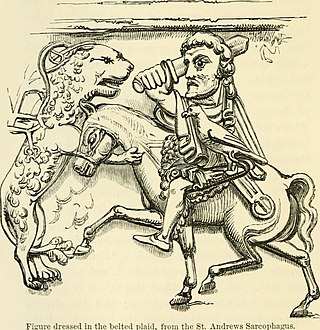
Popular Tales of the West Highlands is a four-volume collection of fairy tales, collected and published by John Francis Campbell, and often translated from Gaelic. Alexander Carmichael was one of the main contributors. The collection in four volumes was first published in 1860–62 in Edinburgh. A new edition appeared under the auspices of the Islay Association in 1890–93. Campbell dedicated the work in 1860 to the son of my Chief, the Marquess of Lorne.
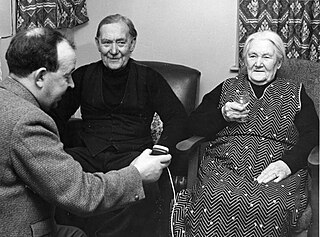
Calum Iain Maclean, was a Scottish folklorist, collector, ethnographer and author.
Dr John Lorne Campbell FRSE LLD OBE (1906–1996) was a Scottish historian, farmer, environmentalist and folklorist, and recognized scholar of both Celtic studies and Scottish Gaelic literature.

Alexander Carmichael was a Scottish exciseman, folklorist, antiquarian, and author. Between 1860 and his death Carmichael collected a vast amount of folklore, local traditions, natural history observations, antiquarian data, and material objects from people throughout the Scottish Highlands, particularly in the southern Outer Hebrides where he lived, worked, and brought up his family between 1864 and 1882. Alexander Carmichael is best known today for Carmina Gadelica, an influential but controversial compendium of edited Highland lore and literature published in six volumes between 1900 and 1971.
The caoineag is a female spirit in Scottish folklore and a type of Highland banshee, her name meaning "weeper". She is normally invisible and foretells death in her clan by lamenting in the night at a waterfall, stream or Loch, or in a glen or on a mountainside. Unlike the related death portent known as the bean nighe, the caoineag cannot be approached, questioned, or made to grant wishes.
Séon Carsuel was a 16th-century Scottish prelate, humanist, and Protestant reformer. Born early in the century, when Carsuel completed his education he joined the service of the Protestant Earl of Argyll, tutoring his son and using his patronage to obtain benefices, most notably becoming Bishop of the Isles in 1565. Standing at over 7 feet in height, Carsuel was an important figure in the history of Scottish Gaelic, as in 1567 his Foirm na n-Urrnuidheadh, the Gaelic translation of the Book of Common Order, became the first work to be printed in any Goidelic language.
Ceirean, Cirein-cròin or cionarain-crò was a large sea monster in Scottish Gaelic folklore. An old saying claims that it was so large that it fed on seven whales: Local folklores say this huge animal can disguise itself as a small silver fish when fishermen came in contact with it. Other accounts state the reason for the disguise was to attract its next meal; when the fisherman would catch it in its small silver fish form, once aboard it changed back to the monster and ate him.
Scottish Gaelic literature refers to literary works composed in the Scottish Gaelic language, which is, like Irish and Manx, a member of the Goidelic branch of Celtic languages. Gaelic literature was also composed in Gàidhealtachd communities throughout the global Scottish diaspora where the language has been and is still spoken.
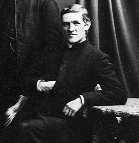
Father Allan MacDonald was a Roman Catholic priest, radically innovative poet in the Scottish Gaelic language, folklorist, and activist for Crofter's rights, free elections, and against religious discrimination in the Gàidhealtachd.
The ceasg[kʲʰɛsk] is a mermaid in Scottish folklore with the upper body of a beautiful woman merging with the tail of a grilse. She is also known in Scottish Gaelic as maighdean na tuinne or maighdean mhara.
Dugald Buchanan was a Scottish poet writing in Scots and Scottish Gaelic. He helped the Rev. James Stuart or Stewart of Killin to translate the New Testament into Scottish Gaelic. John Reid called him "the Cowper of the Highlands".
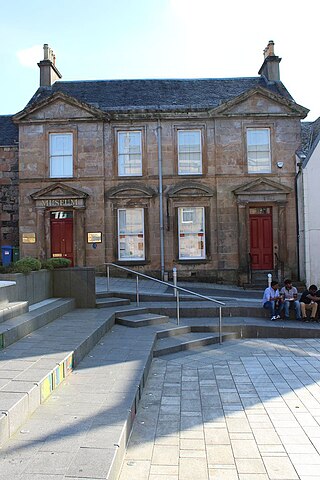
The West Highland Museum tells the story of the Scottish Highlands and the Islands. It aims to cover every aspect of West Highland history, including that of Fort William, where it is located in a listed building in the centre of the town. It also hosts other exhibits for archaeology and wildlife. The museum, which has always been independent, is a member of Museums Galleries Scotland.

Saining is a Scots word for blessing, protecting, or consecrating. Sain is cognate with the Irish and Scottish Gaelic seun and sian and the Old Irish sén - "a protective charm."
In Scottish folklore, the beithir is a large snakelike creature or dragon.
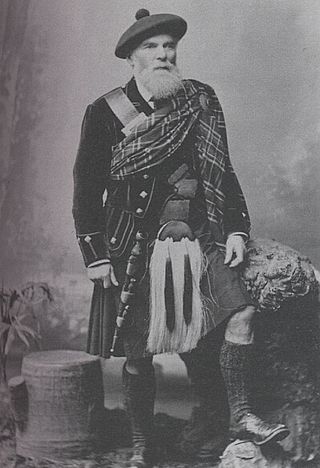
John Murdoch was a Scottish newspaper owner and editor and land reform campaigner who played a significant part in the campaign for crofters rights in the late 19th century
William Ross was a Scottish writer of Romantic poetry in Scottish Gaelic from the Isle of Skye and a parish schoolmaster, who is often referred to as, "The Bard of Gairloch." His most famous song is "Cuachag Nan Craobh", which is now better known as The Skye Boat Song from new lyrics added a century later. More than two hundred years after his death, Ross remains a highly important and admired figure in Scottish Gaelic literature. According to Derick S. Thomson, "Ros is justly regarded as the leading poet of love of the eighteenth century." Despite being widely viewed, however, as a, "love-lorn romantic who died of unrequited love", Ross was also very capable of poking fun at himself.

Elizabeth Catherine "Ella" Carmichael, also known after 1906 as Mrs. W. J. Watson, was a Scottish editor and scholar, remembered as a supporter of the Scottish Gaelic language.

Margaret Fay Shaw was a pioneering Scottish-American ethnomusicologist, photographer, and folklorist. She is best known for her work among Scottish Gaelic-speakers in the Hebrides and among Canadian Gaelic-speaking communities in Nova Scotia.









